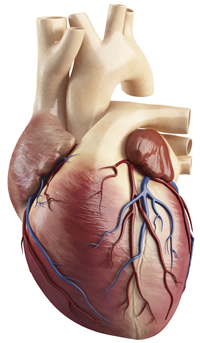Shared Content Block:
Surgery Styles -- "surgery-flex-gallery" class
Coronary Artery Bypass Graft (CABG)
The coronary arteries wrap around the outside of the heart and supply the heart muscle with oxygenated blood.
Coronary artery disease can occur when the inner lining of one or more of the coronary arteries is injured, damaged, or blocked. Fatty deposits called “plaque” may build up on the inside of a coronary artery, effectively narrowing the inside of the artery and reducing, or blocking, the normal flow of oxygenated blood to the heart. This can lead to heart attack and possibly death.
Plaque can also cause coronary arteries to lose their ability to expand or widen, thereby reducing the amount of oxygenated blood that the artery can deliver to the heart muscle during time of increased need, such as when exercising.
Based on the extent and severity of coronary artery disease, your doctors may determine that Coronary Artery Bypass Graft (CABG) surgery is the best treatment option. In this surgery, a vein from another part of your body (typically the internal mammary artery) is used to create a new conduit around the blocked portion of a coronary artery.

In this artist's rendering of the human heart, the coronary arteries are the dark-red blood vessels.
Our surgeons who perform this procedure
This information is provided by the Department of Surgery at the University of Colorado School of Medicine. It is not intended to replace the medical advice of your doctor or healthcare provider. Please consult your healthcare provider for advice about a specific medical condition.




